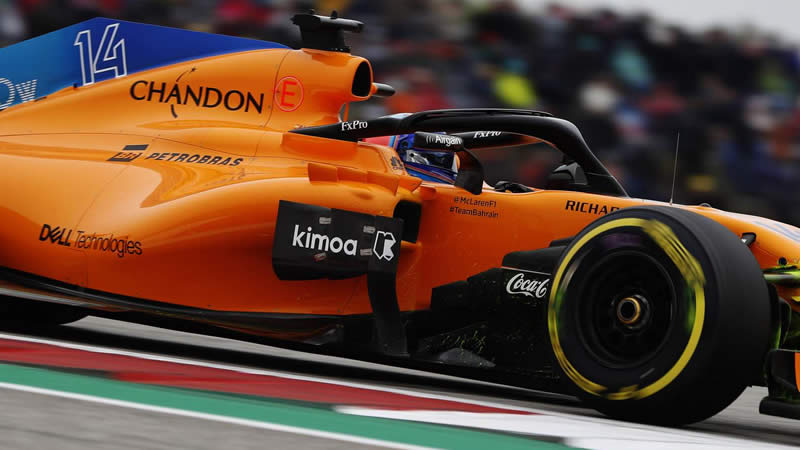McLaren went to great lengths to hide its bargeboards when the car ran on its promotional days at Silverstone, but they are on full show on the first day of testing in Bahrain.
The bargeboards are crucial in pulling the airflow from under the raised chassis section and, in turn, off the trailing edge of the front wing. They then channel that airflow to the rear of car via the coke bottle over the upper surface of the diffuser, improving the performance of the diffuser.
They influence the complete airflow structure across the car’s upper and lower surfaces, and this is why teams put so much effort into these ever-more elaborate designs.
The airflow coming through these horizontal louvers marked in yellow and then green is used to help entice the flow out from underneath the front corner of the floor marked in blue.
This helps produce more downforce from this area to overcome the losses from further rearward.
Obviously, in the end they all merge together and, as I said above, are pulled through the undercut sidepod and, in turn, the Coke bottle area by the low-pressure area behind the car.
The red line marks the trailing edge of the floor’s turned-up section. You can see this turn-up increases as it goes rearward. This is because, as this flow all works together, the rear of this turned-up section is more powerful.
This is what McLaren is trying to change with its individual turned-up sections. By doing that, it is aiming to get the more forward area to work more efficiently, which in the end should generate more ground effect from that area.



